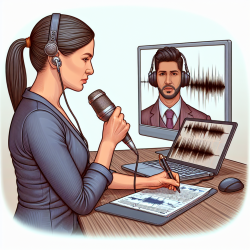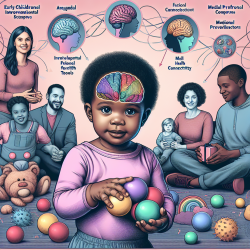Introduction
In the ever-evolving field of speech-language pathology, staying informed about the latest research is crucial for practitioners aiming to improve their skills and outcomes for children. A recent study titled Interaction of language, auditory and memory brain networks in auditory verbal hallucinations provides intriguing insights that can be applied to speech therapy, particularly in understanding and enhancing children's language development.
Understanding the Research
The study investigates the interaction between language, auditory, and memory networks in the brain, particularly in the context of auditory verbal hallucinations (AVH). While AVH is often associated with psychotic disorders, the study reveals that these hallucinations can also occur in non-psychotic individuals, including children. This highlights the importance of understanding the underlying brain networks involved in auditory and language processing.
Key Findings
- The study identifies increased interaction among auditory-language and striatal brain regions during hallucinations.
- It suggests that fronto-temporal connections are altered in individuals experiencing AVH, with variability depending on the phase of illness.
- There is evidence supporting the involvement of unstable memories, source monitoring deficits, and hybrid models of hallucinations in AVH.
Implications for Speech Therapy
Understanding the complex interplay between language, auditory, and memory networks can significantly impact speech therapy practices. Here are some ways practitioners can apply these findings:
- Enhancing Language Development: By recognizing the role of auditory and memory networks in language processing, therapists can develop targeted interventions that stimulate these areas, potentially improving language outcomes in children.
- Early Detection and Intervention: Identifying atypical interactions in these brain networks early on can lead to timely interventions, reducing the risk of language delays or disorders.
- Tailored Therapy Approaches: Understanding individual variability in brain network interactions allows for personalized therapy plans that cater to each child's unique needs.
Encouraging Further Research
While this study provides valuable insights, it also highlights the need for further research to explore the precise mechanisms and directionality of connections in these networks. Practitioners are encouraged to stay updated with ongoing research and consider participating in studies that contribute to the growing body of knowledge in this area.
Conclusion
By integrating the findings from this research into practice, speech-language pathologists can enhance their understanding of the brain's role in language development, leading to better outcomes for children. To read the original research paper, please follow this link: Interaction of language, auditory and memory brain networks in auditory verbal hallucinations.










